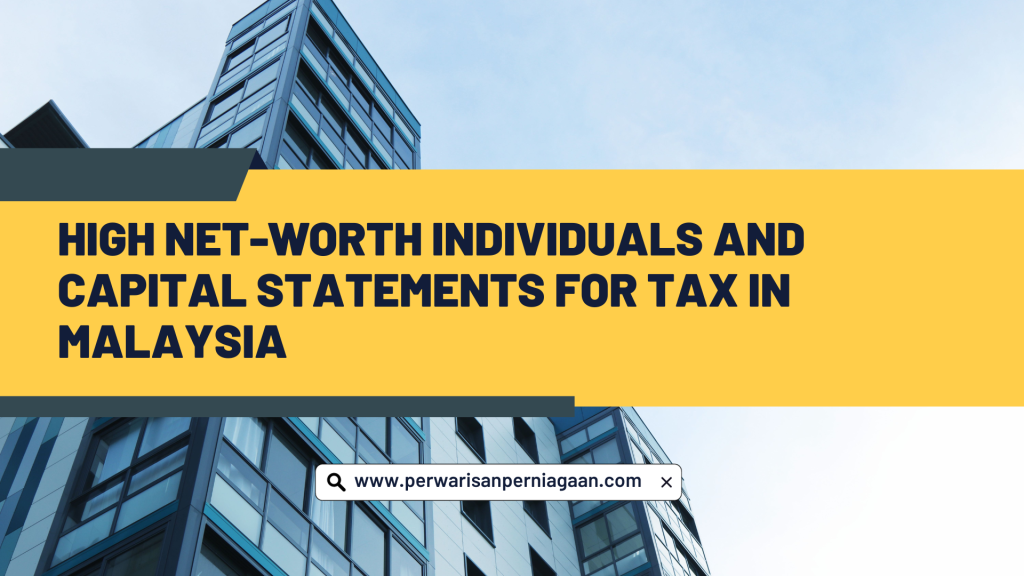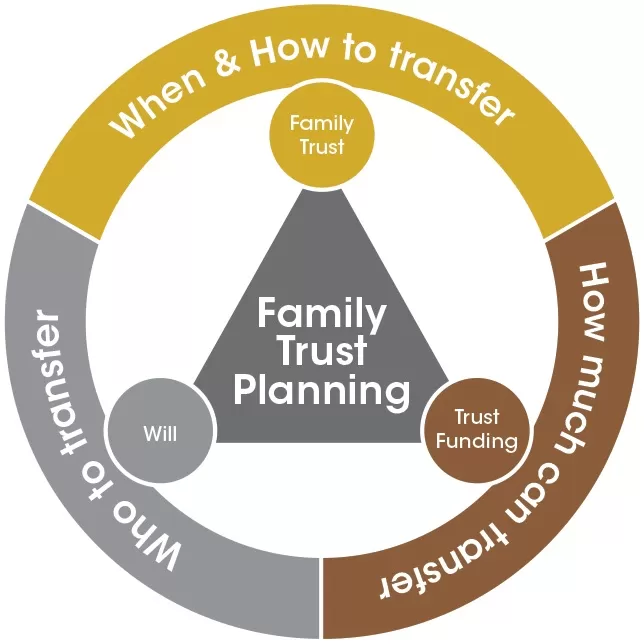Capital Statement From LHDN
Capital Statements – Who Is Typically the Focus of This Inquiry:
- High net-worth individuals.
- Directors, shareholders, and senior management personnel within companies.
- Buyers of high-value assets, including real estate, properties, luxury vehicles, and the like.
- Purchasers of luxury goods, such as expensive watches and designer handbags.
- Individuals who have made substantial investments.
- Those with conspicuous signs of an opulent lifestyle, such as extravagant vacations documented on social media or other sources.
- Individuals with foreign bank accounts that involve substantial fund transfers in or out of Malaysia.
Maybe you’re not familiar with the concept of a capital statement. LHDN has recently reached out to numerous individuals, including directors and chief executives like yourself, with a request to promptly fill out and submit two specific forms: CP102 (Statement of Personal and Private Expenses) and CP103 (Capital Statement).
You might be curious about the purpose of these forms and why only certain individuals are required to complete them.
Capital statement serves as a means for LHDN to validate the accuracy and reasonability of the income amount you reported to them.
What is Capital Statement
A capital statement, referred to as “penyata modal” in Bahasa Malaysia, serves as a mechanism employed by the Inland Revenue Board (“IRB”) in Malaysia to identify instances of tax underreporting by individuals.
Why Is the Capital Statement So Crucial?
- The Capital Statement serves as a critical tool employed by LHDN to scrutinize an individual taxpayer’s reported tax amounts, uncovering any potential instances of under-reporting or income evasion.
- At its core, the formula is simple: Income = Savings + Spending. This implies that an individual’s earnings should align with their combined savings and spending. Taxpayers must be vigilant about any surplus or deficit in their savings or spending, as it may trigger LHDN’s scrutiny and raise concerns about unreported income.
- It’s imperative to note that all the figures presented in the capital statement must be substantiated with proper documentary evidence.
- LHDN possesses the authority to assess additional tax liabilities through a “best judgment assessment” if a taxpayer:
- Fails to provide a satisfactory explanation for disparities in their capital statement.
- Neglects to maintain records or furnish supporting documents.
The significance of the capital statement lies in its role as a tool for tax authorities to ensure accurate reporting and compliance with tax regulations.
Two Forms of Capital Statements
The capital statement consists of two forms:
- CP102 – Statement detailing personal and private expenses, income, and earnings.
- CP103 – Year-end summaries of an individual’s assets and liabilities.
Typically, individuals are mandated to compile the aforementioned information for a duration of five years, which includes the “base year” representing the initial balance of an individual’s assets and liabilities.

https://www.linkedin.com/pulse/capital-statements-malaysia-guide-high-net-worth-shz8c/
Who Is Subject to Capital Statements and Tax Compliance?
Capital statements are primarily aimed at specific groups to ensure tax compliance. The targets include:
- High Net-Worth Individuals: Those with substantial financial resources.
- Directors, Shareholders, CEOs, CFOs, etc., of Investigated Companies: Key figures within companies undergoing tax inquiries.
- Individuals with Significant Spikes in Expenditure: Those making substantial purchases, such as high-value assets, luxury items, or extensive investments.
- Individuals Displaying a Lavish Lifestyle: Those who seem to live extravagantly.
- Individuals with Overseas Bank Accounts: Particularly those with substantial fund transfers to or from Malaysia.
- Reports from Whistle-Blowers: Information supplied to the IRB by concerned citizens.

What to Include in a Capital Statements and Tax Compliance?
Below is a non-exhaustive summary, along with examples of items that should be encompassed in the capital statement. Please note that individuals are required to include in the statement the assets, liabilities, income, and expenses of their spouse(s) as well.
The following list outlines items relevant to both the individual and their spouse(s) and provides illustrative examples:
Businesses and Partnerships
- – Capital injections.
- – Current account balances.
- – Profits or losses.
Land and Properties
- – All properties owned by the individual under investigation, as well as those held by their spouse(s), including jointly owned properties.
- – Any land or properties acquired or payments made by the individual for immediate family members, third parties, etc.
Shares and Other Investments
- – Quoted shares.
- – Unquoted shares.
- – Trust accounts, and more.
Cash and Bank
- – Savings accounts.
- – Current accounts.
- – Investment-linked accounts.
- – Fixed deposits.
- – Cash held in safe deposit boxes, and so forth.
Furniture and Appliances
- – Long-term personal use items, such as fitness equipment, laptops, mobile phones, computers, PDAs, televisions, and the like.
Motor Vehicles
- – Vehicles acquired and registered under the names of the individual under investigation and their spouse(s).
- – Vehicles purchased by the individual for immediate family members, third parties, etc.
Jewelry and Valuables
- – Branded bags.
- – Jewelry.
- – Antiques.
- – Watches, and similar items.
Liabilities
- – Term loans.
- – Hire purchase agreements.
- – Personal loans.
- – Advances obtained from private limited companies.
- – Credit card balances.
- – Amounts owed to individuals, and more.
Other Assets
- – Loans extended to other individuals.
- – Loans or advances to private limited companies.
Capital Gains/Losses
- – Arising from the sale of quoted and unquoted shares.
- – Real estate properties.
- – Motor vehicles.
Personal and Private Expenses
- – In alignment with the list of expenses in CP102.
Income
- – Employment income.
- – Dividends received.
- – Commissions earned.
- – Contract income.
- – Rental income.
- – Income from Real Estate Investment Trusts (REITs).
- – Income from fixed deposits or current accounts.
- – Repatriation of funds from overseas to Malaysia.
- – Windfall gains.
- – Inherited funds.

Common challenges you may encounter include the following:
- Incomplete Supporting Documents and Transaction Details:
It’s uncommon for individuals, as opposed to organizations, to retain every receipt, invoice, and record for extended periods. Without these documents, your capital statement may lack necessary transaction details, potentially leading to an inaccurate representation of your spending compared to your available funds.

- Undocumented Cash-Paid Expenses:
Many everyday personal transactions, such as buying food from street vendors, often lack official receipts or invoices. In such cases, estimating your expenses becomes necessary. If payments were made using cashless methods like credit cards or e-wallets, you can utilize statements to help estimate your spending, provided they pertain to the same expenses.
- Multipurpose Bank Accounts:
While it’s typical to maintain separate bank accounts for personal and business use, some individuals who own and manage their companies may use personal accounts for business transactions. This mixing of personal and business funds can complicate the distinction between personal and company-related expenses, potentially distorting your capital statement.
- Calculating Gains/Losses on Investment Sales:
Capital gains or losses aren’t subject to income tax. To demonstrate a gain as a capital gain, you must furnish solid supporting documents. However, investment statements may not always provide sufficient details to accurately calculate gains. This can pose an issue when trying to prove that certain expenses were funded by capital gains rather than income.

- Calculating Gains/Losses from Overseas Investments:
Estimating income from overseas investments can be challenging due to fluctuating foreign exchange rates. If you haven’t maintained records of the actual income received, calculating the correct amount becomes a risk. Inaccuracy in these calculations can result in discrepancies that must be explained to LHDN.
Capital Statement = Tax Health Check:
Preparing a capital statement correctly can be challenging for first-timers. While experience can lead to improved accuracy over time, LHDN doesn’t view it as a learning process. Any detected discrepancies will prompt LHDN to request explanations and evidence. Failing to provide satisfactory explanations is akin to failing to declare income, a serious offense that can result in fines and imprisonment.
You don’t have to wait for LHDN to initiate inquiries. A capital statement can reveal potential tax risks, allowing you to proactively address them. Identifying discrepancies in advance enables you to track down root causes, gather necessary supporting documents, and enhance your record retention practices to avoid future difficulties in achieving an accurate financial tally.
Consequently, a capital statement serves not only as an LHDN tool but also as a means for you to conduct a thorough tax compliance health check.
If you require assistance with your capital statement report, please click the link below to schedule a consultation:
https://perwarisanperniagaan.com/capital-statement/
https://perwarisanperniagaan.com/capital-statement/
Thank you reading Capital Statement From LHDN
Appointment Capital Statement LHDN
..
Sources
- Challenges Faced By High Net Worth Individuals in Managing Capital Statements and Tax Compliance – https://www.majalah.com/?classified.challenges-faced-by-high-net-worth-individuals-in-managing-capital-statements-and-tax.GTR3Y5LLN5
- Apa itu Penyata Modal atau Capital Statement – https://perwarisanperniagaan.com/penyata-modal-atau-capital-statement/
- Capital Statement From LHDN – https://perwarisanperniagaan.com/capital-statement-from-lhdn/
- High Net-Worth Individuals and Capital Statements for Tax in Malaysia – https://perwarisanperniagaan.com/capital-statement/
- Majalah.com – Capital Statement From Lhdn – https://www.majalah.com/?classified.capital-statement-from-lhdn.GTR3YF26BB
- Majalah.com – Apa Itu Penyata Modal atau Capital Statement – https://www.majalah.com/?classified.apa-itu-penyata-modal-atau-capital-statement.GTR3YJZWW5
- 7 Powerful Steps to Claim HRD Corp-Claimable Training! – https://hrdtraining.mohdibrahim.com/hrd-corp-claimable-training/
.












